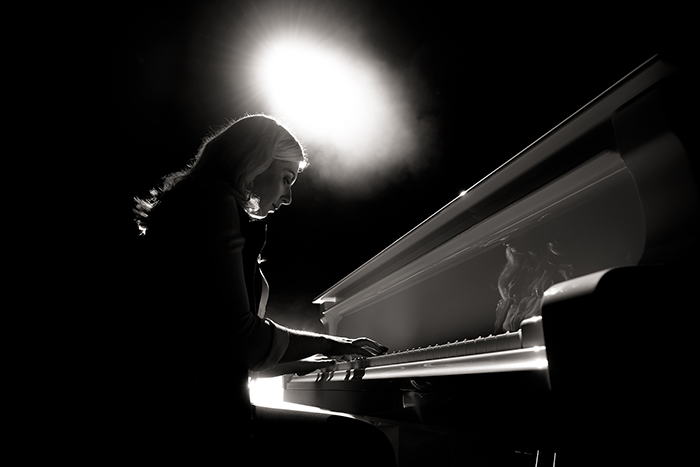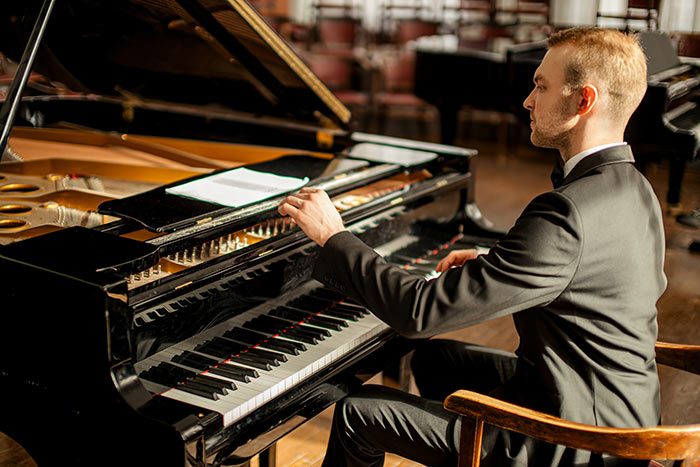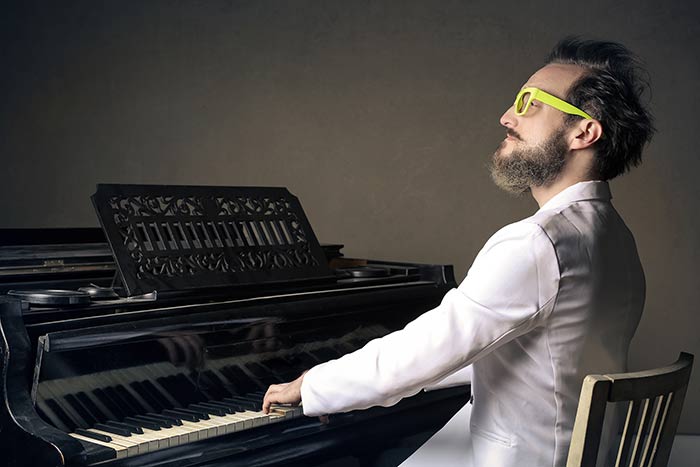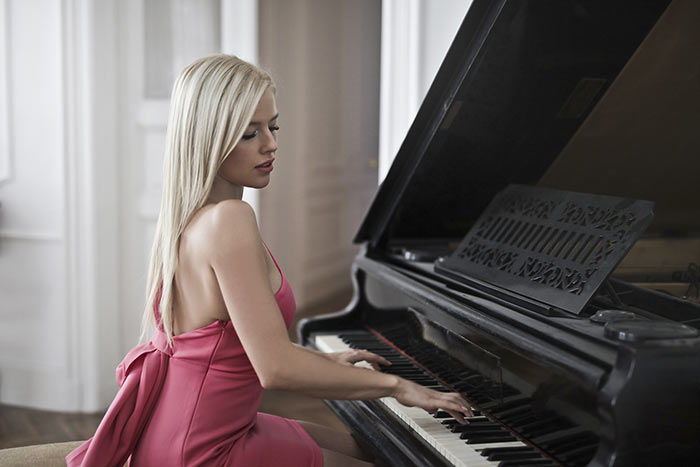Choosing Repertoire
This is a very interesting topic that could dictate a lot on how we progress and how we discover our strengths and weaknesses.
Many performers today have chosen to stick to performing works by one or just a few composers. This allows a complete dedication and sinking into the depths of a specific language and style. On the other hand, we have performers who like to discover as they play – as they grow as musicians, finding new pieces and challenging themselves by immersing themselves into the unknown.
What I find interesting is how the repertoire we chose shapes us. Different aspects of our playing require various degrees of care at different times in our growth.
For instance – for the very beginners it is incredibly important to nurture technical aspects and finger independence. Playing piano is a lifelong journey and providing the technical background that can healthily grow and change over time – is crucial. This unfortunately does mean a lot of etudes and technical exercises as well as continuity in practice. Being in shape and focusing on different aspects of technique is a condition number one when playing any instrument.
At a young age- going through a lot of pieces is incredibly important. Getting the sense of styles, structures and forms can only be done by experiencing them with our hands and listening to recordings.
What is wonderful about music is that we can simply choose so much…
In my teaching I find that it is very beneficial to give to a student two pieces with different speeds of work in mind. one piece that requires a long layering and investment, practise that is “for the long run”, where the process is prolonged and the satisfaction / feedback feels at a slower pace too. The other piece in return, provides more instant gratification and the sense of completion and achievement happens sooner. This is psychologically very important, that we have a sense of reaching for understanding of what we are doing.
Understanding of Styles
Many traditional schools decided the set way for understanding music styles through centuries. This means that in each grade you will be examined on the usual – one baroque piece, classical sonata or sonatina, a romantic piece and something “later” than romantic period. This, in addition to technical exams consisting of scales and arpeggios, provides the most common structure at which we as society raise musicians. The idea behind this is of course to glance over the history of music in deeper and deeper layers as we go through education. Only later in life can we actually start programming in the manner that fits us as people and our characters.
I tend to programme at least one of the 3 leading groups of composers – German, French, Russian. I always combine it with something that personally feels right.
Knowing What We Like
Different epochs had different focal points in music communication. It is not until the romantic period that human emotion and state of spirit was in the central aspect of music making. That coincided with piano sound becoming the star of the show too, as opposed to previous aesthetics. This is naturally due to instrument development too- the piano as we know it is relatively young and all the previous instruments had a lot to offer though they were all limited in their own ways.
In baroque for instance, it wasn’t relevant which keyboard instrument was used. In classical period likewise – the appeal of piano was based on its practicality rather than the beauty of the sound. The multi-practical usage of keyboard instruments included many things.. replacement of orchestra, for composing, handy sized keyboards were used for travelling and performing too.
We could say that different styles had different aesthetics at heart and this could maybe be a point of attraction for us.
We all have different tastes and characters and music truly does offer enough for everyone.
What’s incredible about an interesting repertoire combination is that one piece can shine a light on another one, and thus show us the sides that could be seen only in terms of context.
I will write a few practical proposals just as one of many ideas – in hope that they might be useful to some!
- I frequently like to “sandwich” centuries: take something very “early” and something recently composed. That provides a satisfying sense that time has passed, that piano changed so much and that there is a link that we have to find and feel. Some unbelievable combinations are Bach & Berg, Schoenberg or Rameau & Ligetti, Scarlatti & Scriabin. We get to see how harmony travelled, how the concept of sound changed, how form changed. It can be really magical!
- We could take the same form and travel through centuries with it – for instance Sonatas. They existed as a constant form but varied in length, structure etc. Choosing different composers and making a journey out of it is a wonderful idea.
- We could choose pieces from the same style but match them based on the content and the character. Many people combine Brahms and Schumann as they so beautifully fit. Here also, the possibilities are endless.
- Character matching – if we opt for several pieces that we individually like, that don’t necessarily have a strong link between them, it could be a good idea to watch for the contrast of characters / keys / narratives of the pieces. It is nice when pieces give us a lot of opportunity for expression, hence variety is always welcomed. Sometimes it is hard to sustain attention if the expression tends to linger around the same point. It makes it easier to have different worlds within different pieces.
- At the end of the day – it is not really relevant how you programme your performance. If the music you chose reflects your desires and your inner needs, it is more likely you will be an invested performer and draw your audience in. That is more important than intellectualising over the external structures.
- Maybe the most important one: choosing what will benefit our growth, what will be of technical / musical benefit to us. Every single piece contributes to our development and understanding and growing through performing is the only way forward in understanding music!
Happy practising with an open mind and heart!











